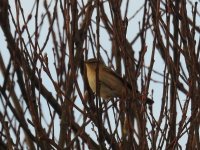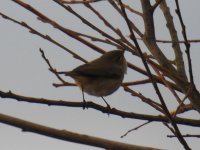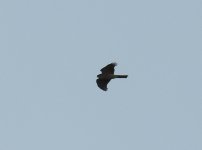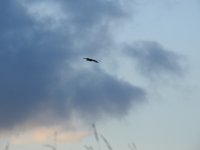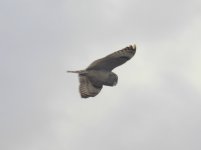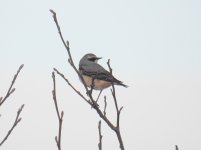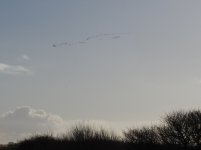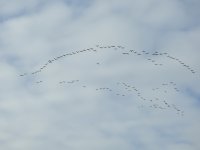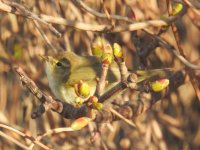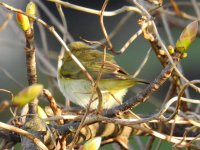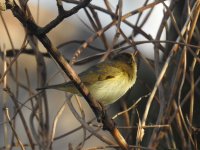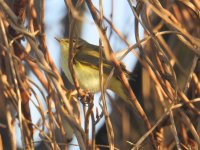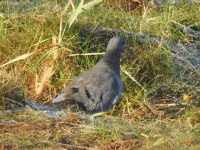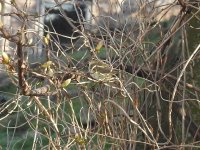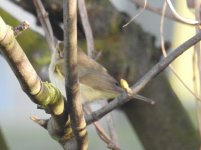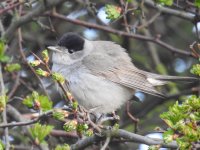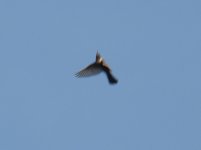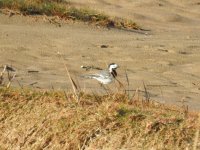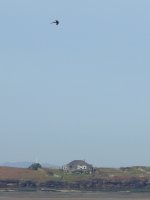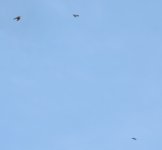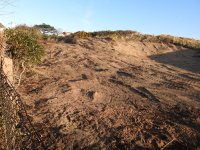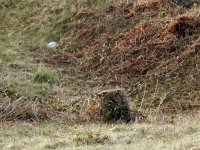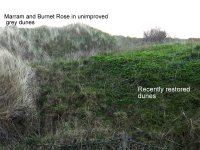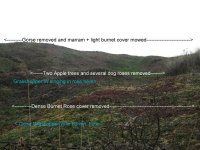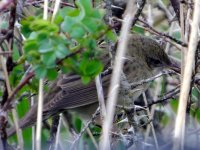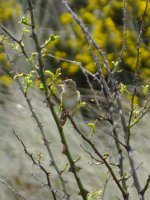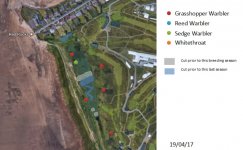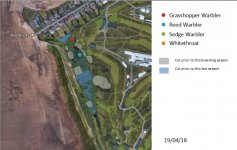A bit of a special day today. The winds were light and from the East of south. It hadn't lashed down all night and it felt warmer and a bit muggy.
Not too much dropped at dawn, though "chacking" thrushes at either end of the Reserve were a good start. A new Ring Ouzel this time a female left the Ivy in the superbowl noisily as I arrived. Meanwhile in the Alders at the south end, a Fieldfare (new for the year) carried on the chack fest before heading off inland and gaining considerable height. Other than that there was little sign of an overnight arrival until a Blackcap sputtered into song in the Ivy before moving into the big Hawthorne. In all there were 4Goldcrests and 2 Willow Warblers joining the resident Chiffchff. No Grasshpper, Reed or Sedge Warblers yet. They really should be here by now.
Today it was overhead passage that stole the show. I nearly missed what on most days would have easily been the highlight of the day while photographing the Blackcap. I didn't have time to get bins, let alone a camera onto the cream-crown Marsh Harrier than came bashing through low with two Crows hard on it heels. I didn't see where it came from, but I am guessing from the estuary. It left NE below roof level and was out of view by the time I got out from the boardwalk and up into the dunes.
By now there was a strong passage of hirundines, Wheatears were starting to materialise on the beach (8 in total) and parties of White Wagtails were coming in off, landing briefly then continuing. The totals were Sand Martin 58, Swallow 10, including one missing tail streamers and the first House Martin of the year and White Wagtail 51.
At about 07:45 things started to take off. I heard an unfamiliar call (I'll pin it down on the tape later) which turned out to be coming from a flock of 4 Ring Ouzels which were circling high. Initially they were dots and I needed the scope to pick them up. Two came a bit lower and allowed me to get some ropey photos. They appeared to be fighting. I heard another Ouzel but failed to see a bird about 10 mins later. So min 4, but probably 6 recorded. I was still putting the camera away from the stratospheric Ouzels when I heard a familiar yet unfamiliar call. It took a bit of time to work out that I could hear cranes. At first I couldn't see anything, but eventually I picked up two dots already high over the beach close to King's Gap and heading off towards the Lancs coast (next stop Leighton Moss?) With the scope I could see that they were indeed Cranes. I tried a photo, but the camera wasn't for picking them up against a near featureless sky. The time stamp of the 1st failure is 07:50.20. I couldn't get past Crane spp on my views - as they flapped and glided away - I could only just make out darker flight feathers and the necks were obscured. However the sound recording should be enough to rule out escapes. If accepted, that's a new species for the Red Rocks List which would be 271 and my 259th.
Also new for the year was a Great spotted Woodpecker which arrived from the south and dropped into the boardwalk Alder. It was a good day for finch passage with 2 Brambling 45 Siskin and a Redpoll spp (it was a bit gruff but didn't land)
The last R ouzel shot has a lot of blue space cut out of it to get them in




